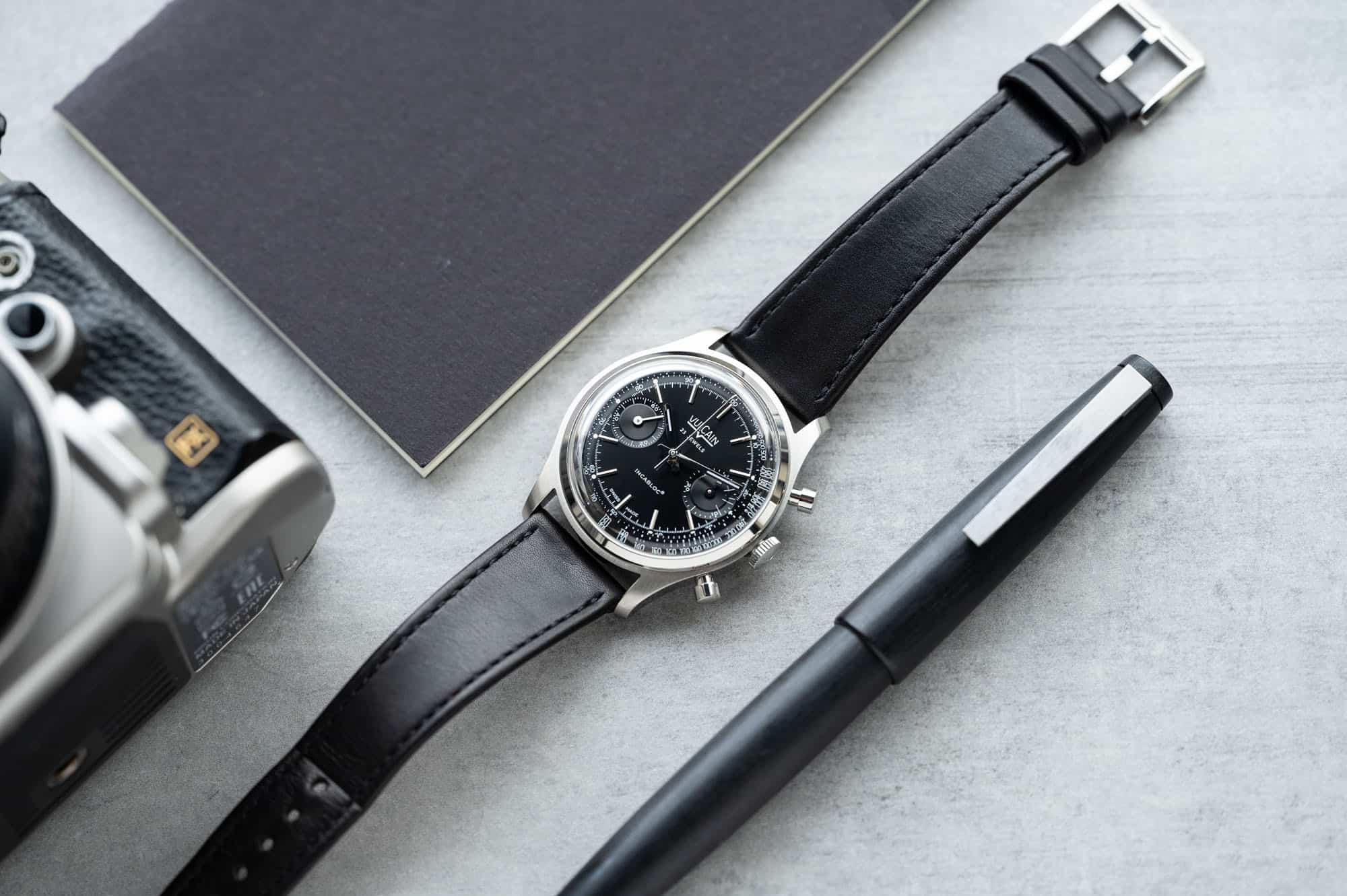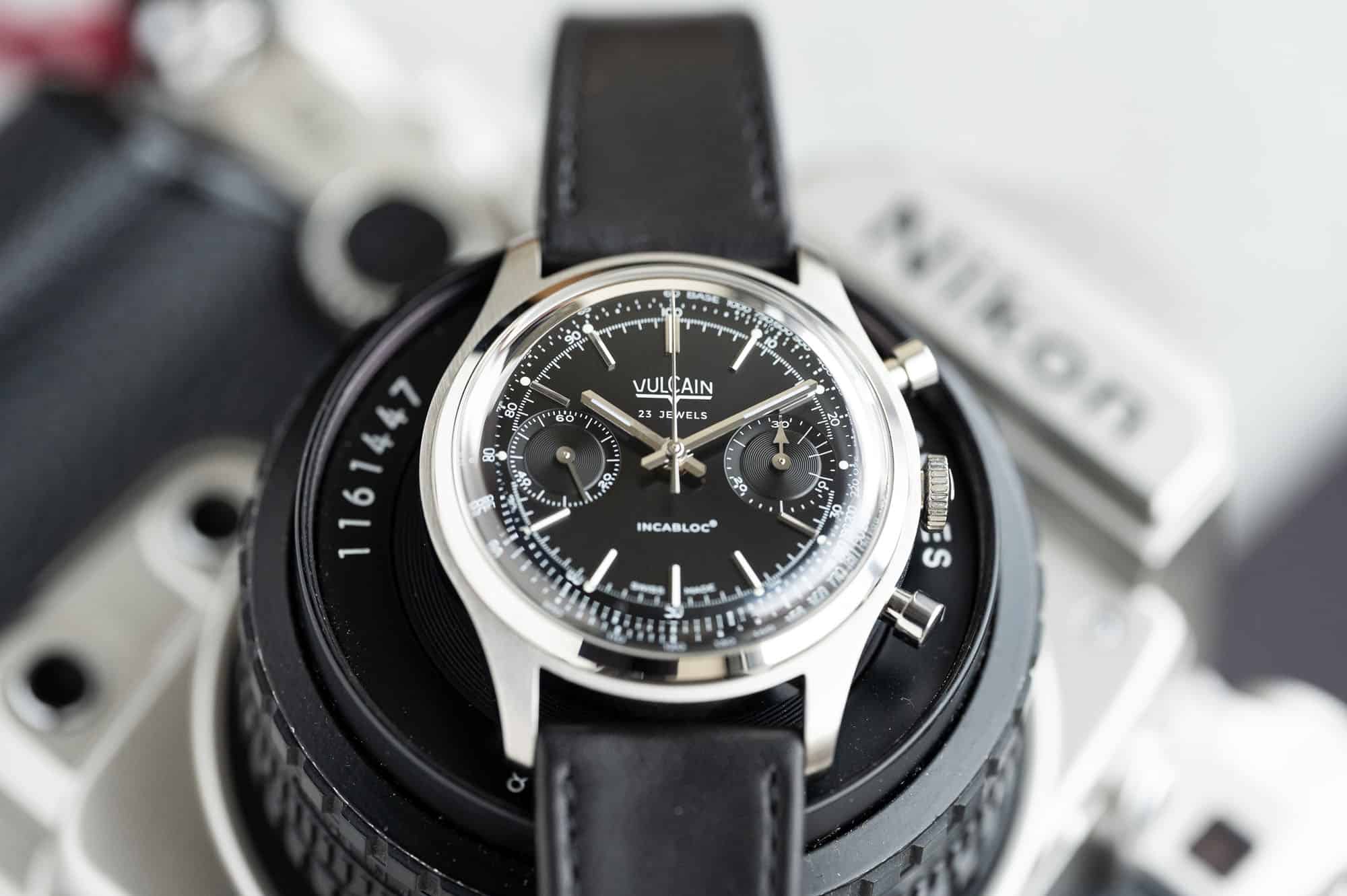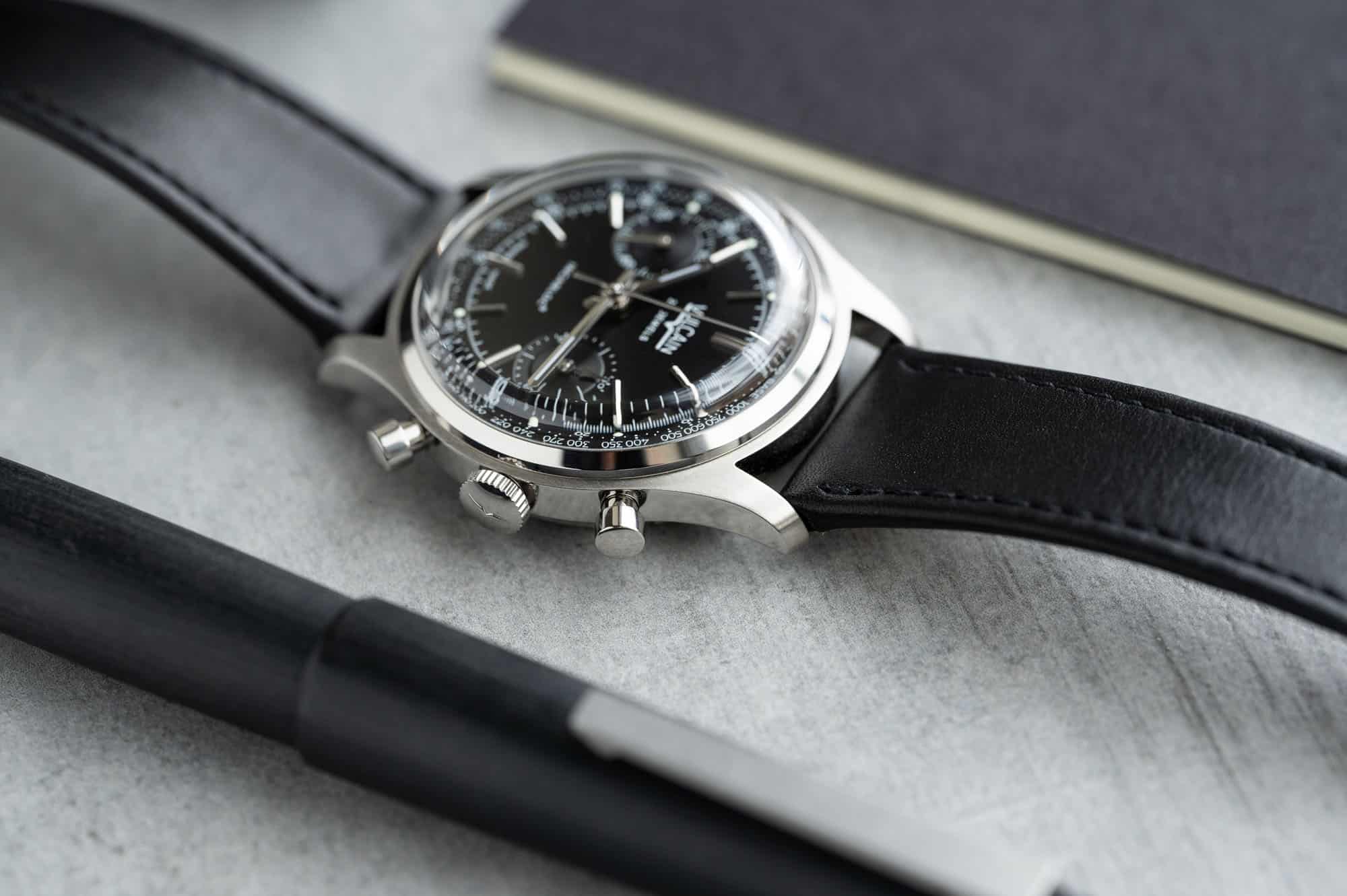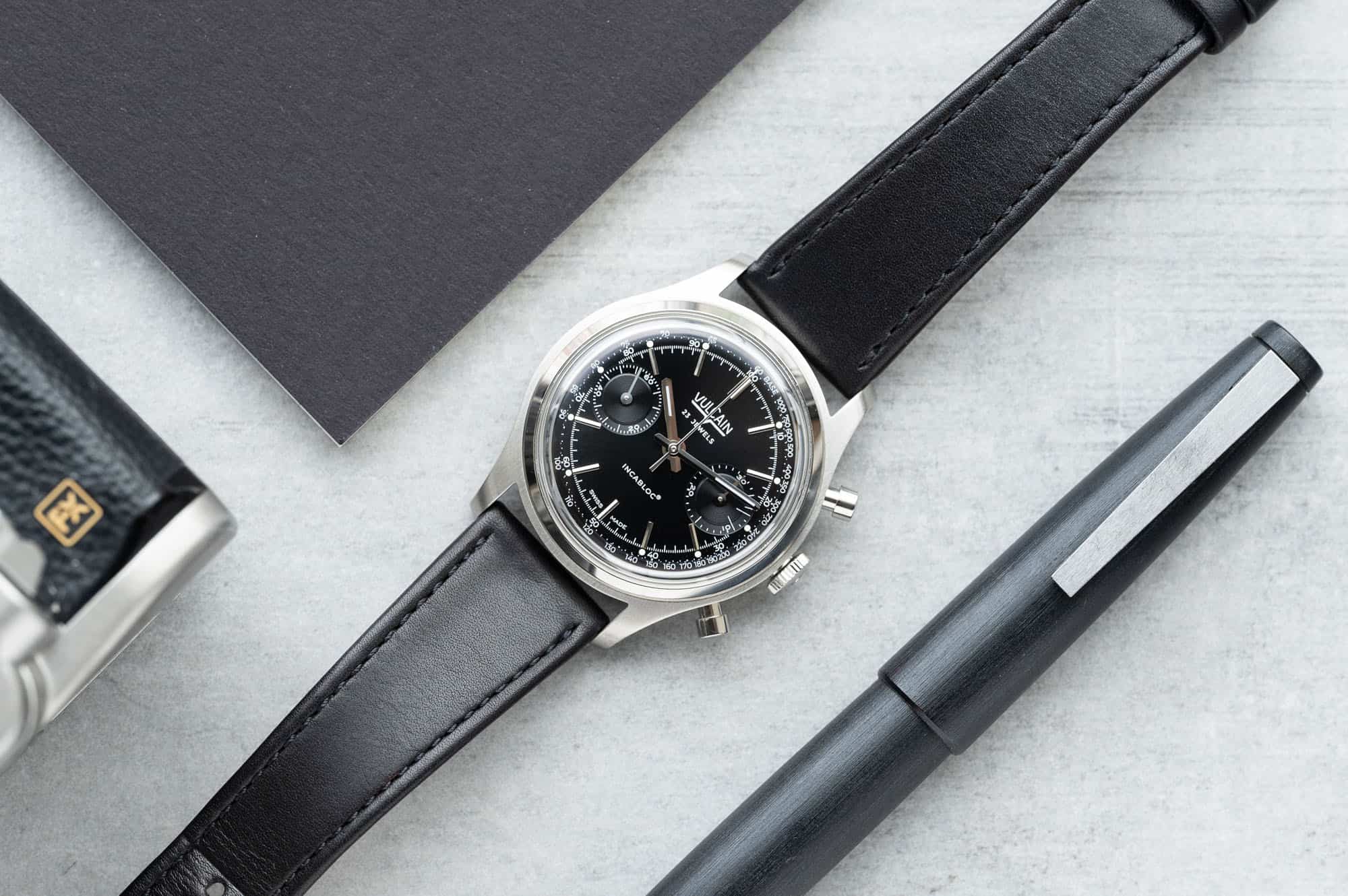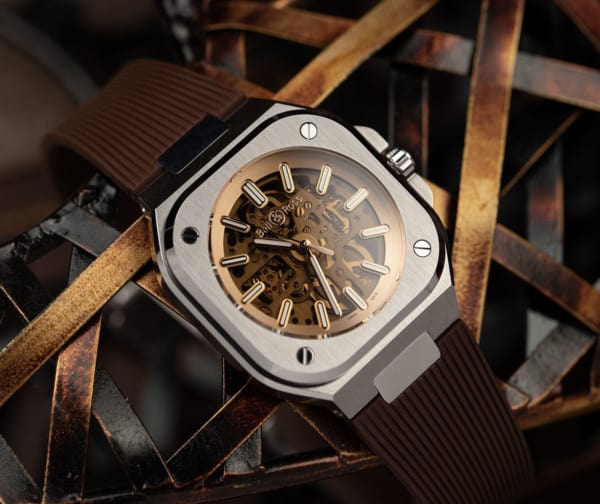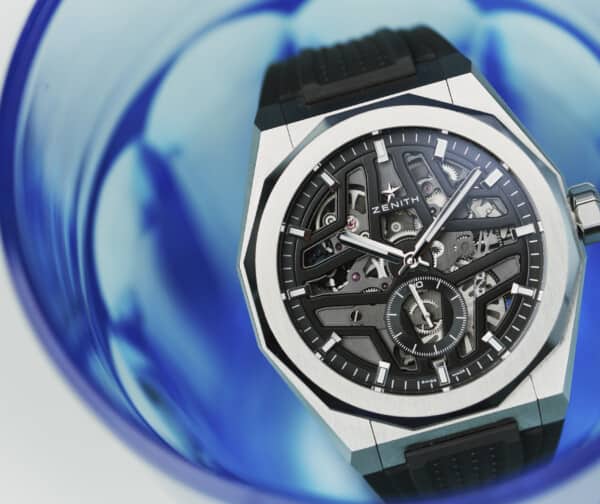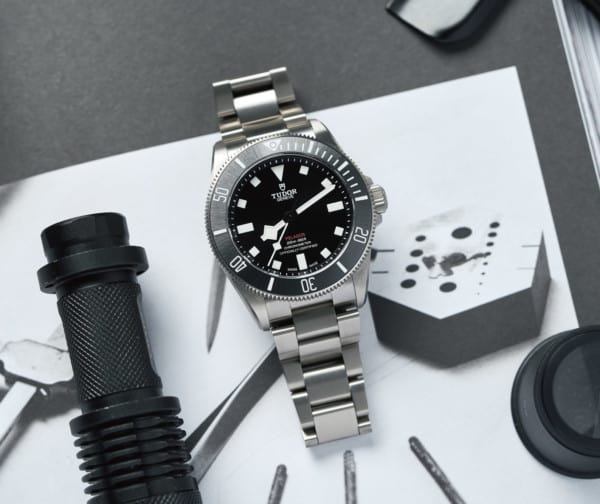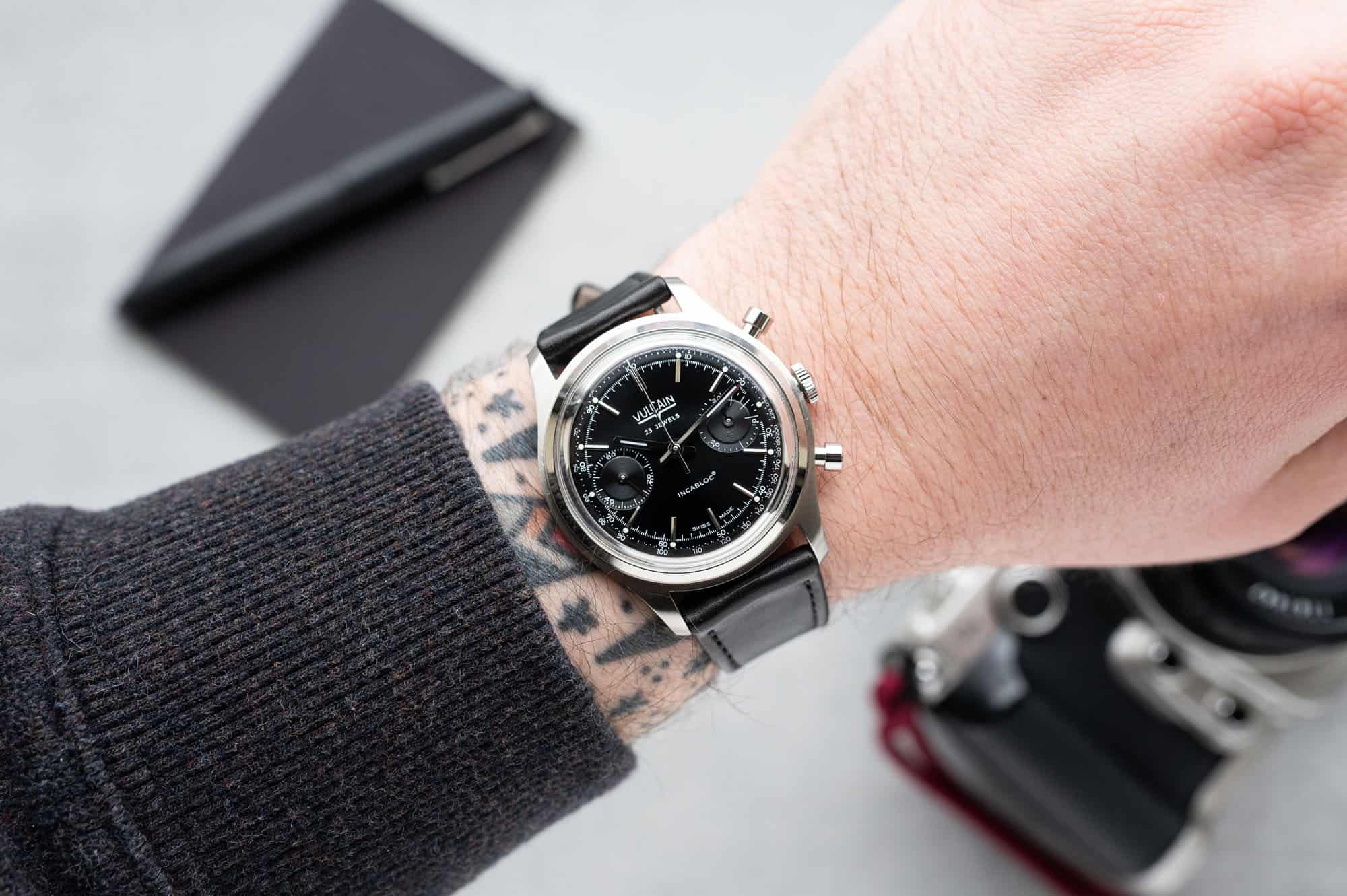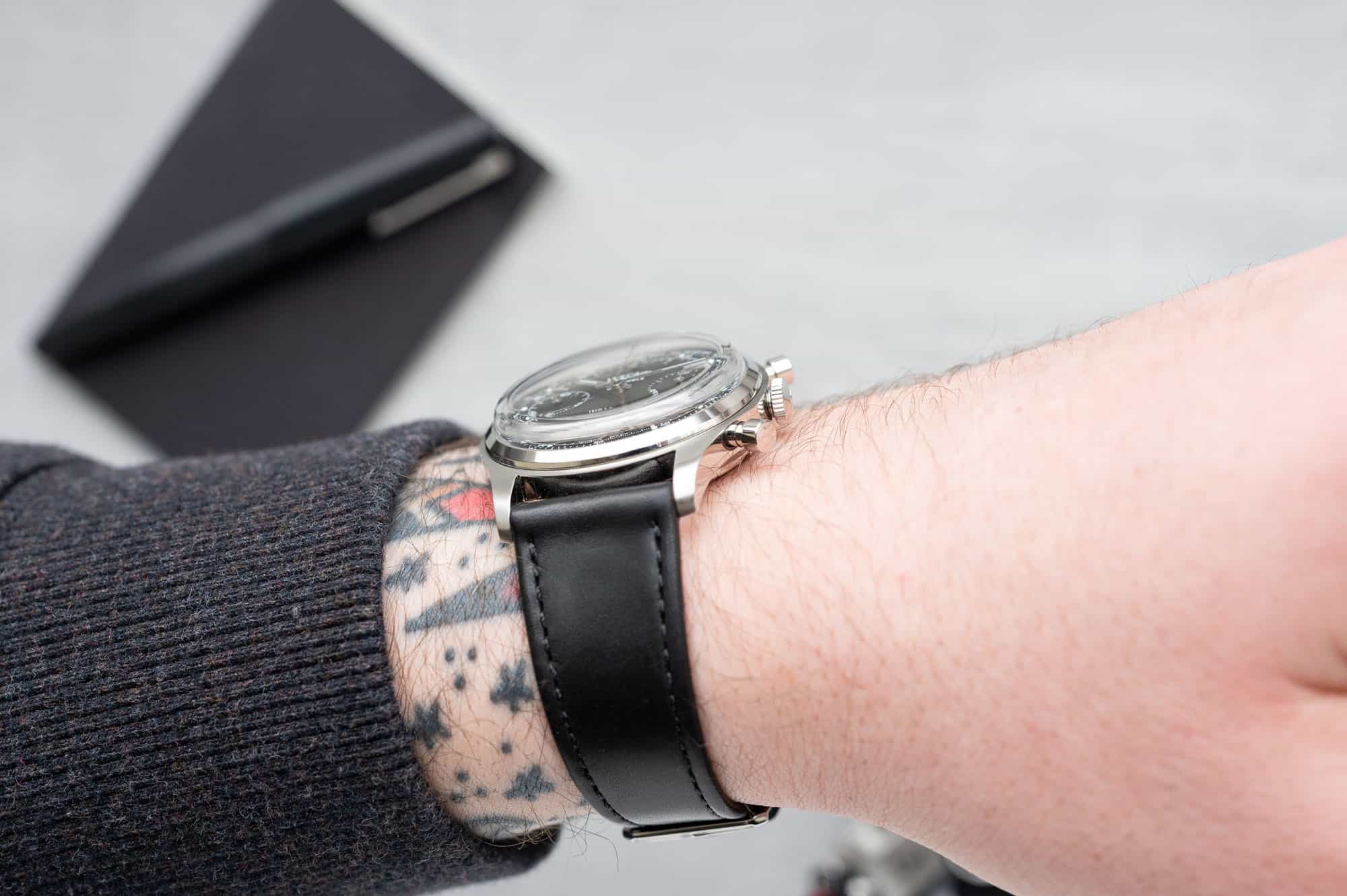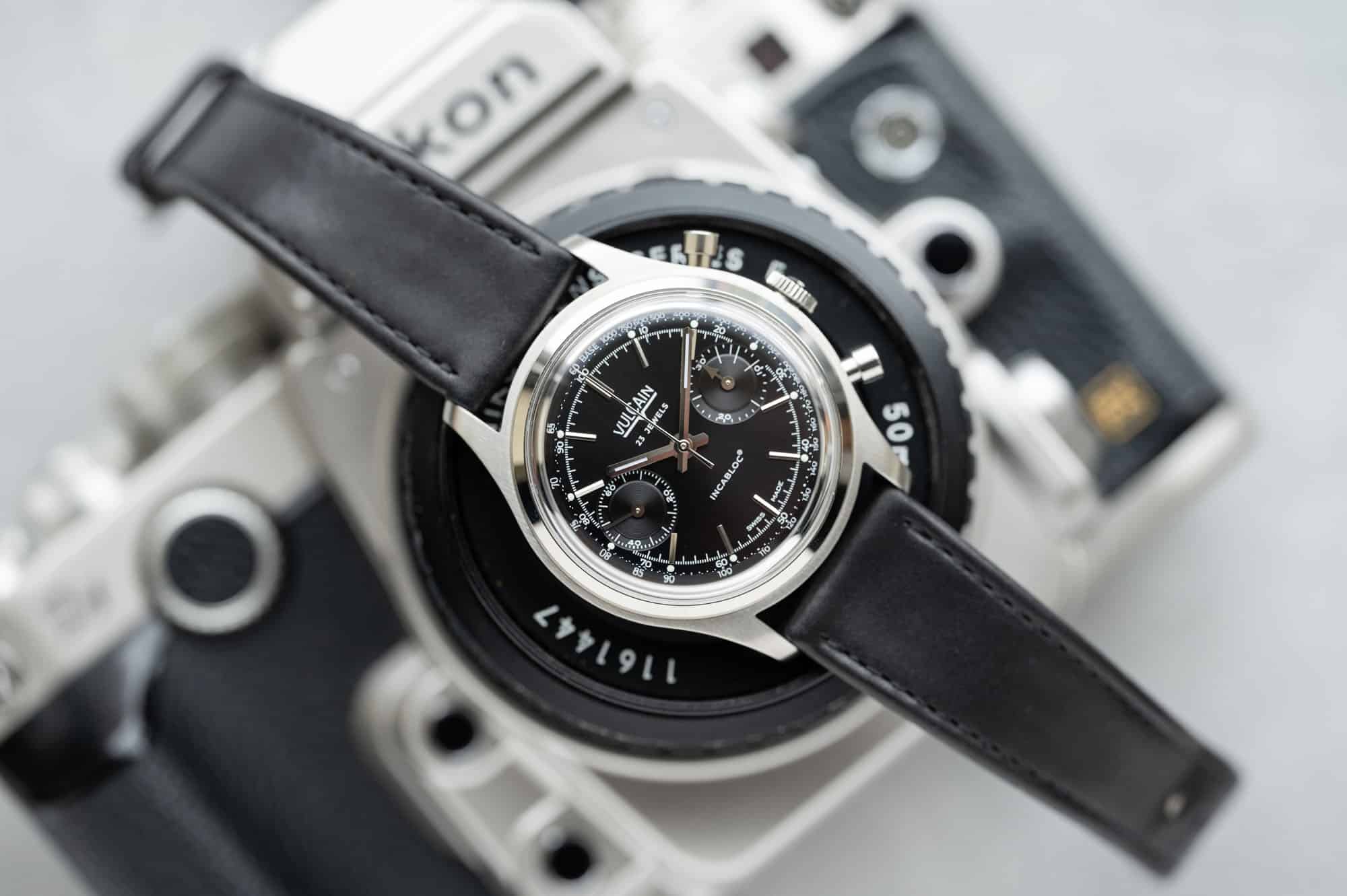Vulcain has been around in one form or another since the mid-1800s. A few ownership changes, some rocky years, a shutdown, and two eventual revivals make up the long and rocky road that is the Vulcain brand. If you’ve heard of the brand before, it’s most likely that the Cricket is the watch you’re familiar with. The Cricket gets the most attention, being worn on the wrists of American Presidents and having a unique alarm complication that made it stand out from the pack. While the Cricket is great, there’s another watch that doesn’t get quite as much attention, but definitely deserves it, and that’s the Chronograph 1970’s. This new release from Vulcain is a true-to-form recreation of a watch they released back in the 1970s, right down to the spot-on vintage proportions. Let’s dig in and take a closer look at this charming 38mm chronograph from Vulcain.
Vulcain Continues Revival With New Chronograph 1970’s
Vulcain Continues Revival With New Chronograph 1970’s
Case
Vulcain’s vintage proportions and style are spot-on here. Measuring 38mm wide by 12.4mm thick (a hefty portion of that taken up by the double domed sapphire crystal), the Chronograph wears like a dream. It’s not just about the dimensions, because the design of the case contributes a lot to how it looks and feels on the wrist. The profile is especially interesting. A very thin mid-case is married to a tapered bezel up top and a similarly-shaped case back below. The thin mid-case is polished to a high shine with brushing on the top surfaces. The finishing treatment does an excellent job of breaking up the case. The narrow, flat bezel running around the crystal is also polished to a high shine, making it really pop off the brushed surface that it rests on top of.
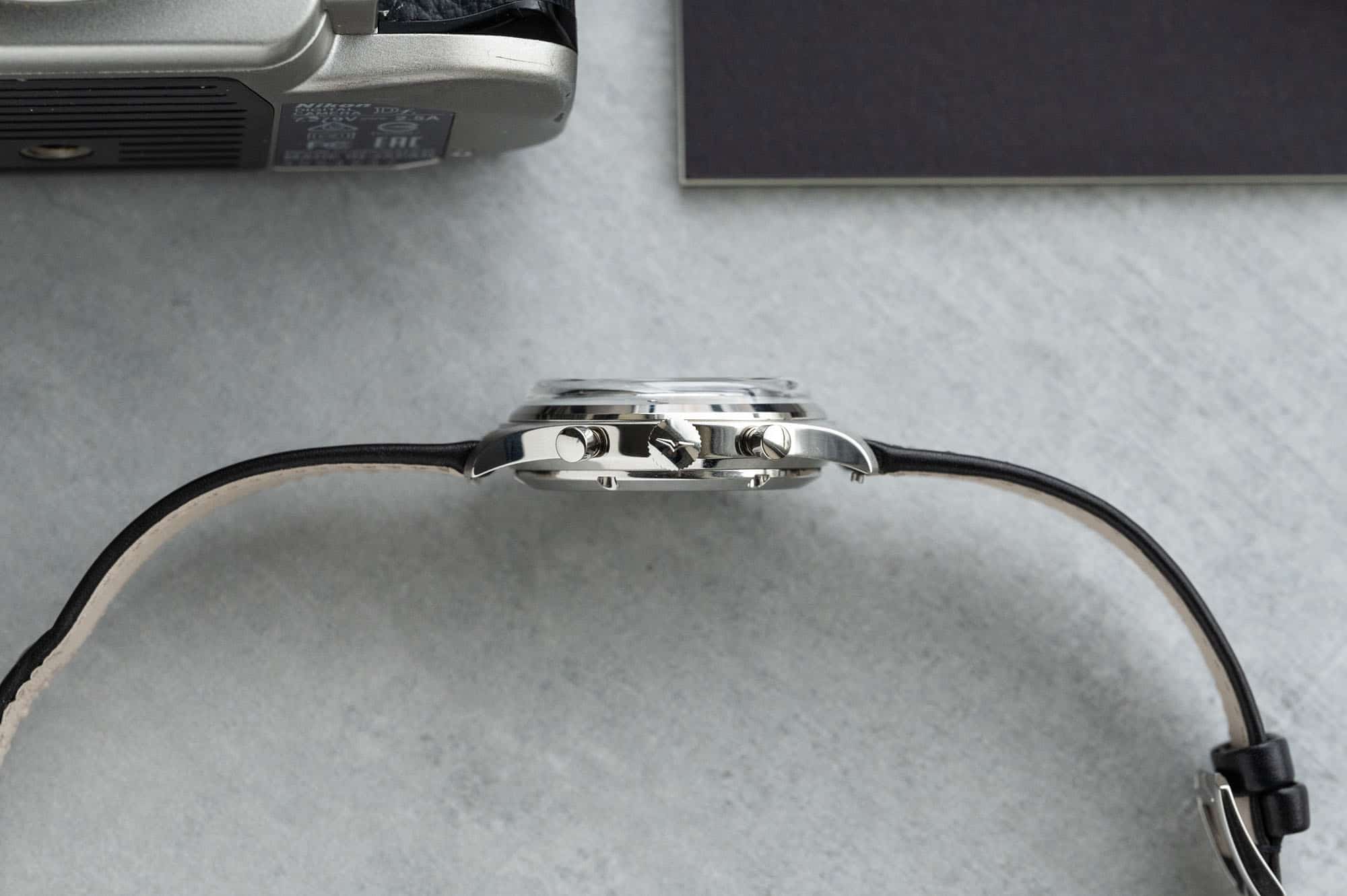 The double-domed sapphire crystal is shaped in a way that it looks very similar to a vintage acrylic but with all the conveniences of sapphire. You won’t have to go digging any Polywatch out of the tangle of nato straps, spring bars, and miscellaneous tools that make up the depths of that dreaded watch junk drawer since the sapphire is resistant to scratches. I really like the shape of the sapphire. Sometimes other makers don’t nail it, and the crystal looks too modern on top of a watch with clearly vintage styling. There is a fair bit of distortion from the crystal, which is pleasing at a glance but might get in the way should you be doing any serious tachymeter calculations.
The double-domed sapphire crystal is shaped in a way that it looks very similar to a vintage acrylic but with all the conveniences of sapphire. You won’t have to go digging any Polywatch out of the tangle of nato straps, spring bars, and miscellaneous tools that make up the depths of that dreaded watch junk drawer since the sapphire is resistant to scratches. I really like the shape of the sapphire. Sometimes other makers don’t nail it, and the crystal looks too modern on top of a watch with clearly vintage styling. There is a fair bit of distortion from the crystal, which is pleasing at a glance but might get in the way should you be doing any serious tachymeter calculations.
On the right side of the case, you’ll find two chronograph pushers flanking a push-down crown. The crown itself has a coin-edge texture that makes it easy to wind up the movement and set the time. It’s signed with the Vulcain “V” logo, which adds a little something to the otherwise plain side of the case. Operating the chronograph pushers is nice and snappy. Starting, stopping, and resetting the hands all have a satisfying click. The 1970s Chronograph only has 5 ATM of water resistance, which makes sense for a vintage chronograph.
Dial + Hands
There’s something so classy about a black on black dial. The base of the dial is finished in an elegant black sunburst with a semi-matte finish. The resulting effect is subtle, but it really makes a difference from if it had just been a flat, matte dial. Each hour has a faceted silver marker. The main and chronograph hands are both rendered in the same highly-polished finish. Between the mirror hands, text-heavy dial, aggressive dome on the sapphire, and relatively small size of the dial, it can be a little tricky to read at a glance. The tachymeter scale (white text on the black dial) is especially obscured by the crystal, even when looking straight on.
Chronographs tend to lean one of two ways for me — stylish or purpose-built. When reading the time off of a Speedmaster, there’s really no guesswork involved. It’s clear, legible, and straight to the point. With the Vulcain, you have to work a little harder to tell the time, and even more so if you want to make use of the chronograph features. It definitely leans more stylish to me, and in this case, I’m totally okay with it. I wouldn’t consider timing the laundry or how long it took my shot of espresso to come out of the machine super mission-critical so a little bit of extra eye strain is worth it to experience wearing the watch.
Movement
Powering the watch is Sellita’s SW510 M HB b chronograph movement. It’s a manually wound movement with two registers that has a 30-minute counter at 3 o’clock, a running seconds counter at 9, and a 60-second central seconds hand. The movement features an impressive 63 hours of power reserve. It beats at a rate of 28,800vph with 23 jewels throughout the movement. The SW510 is used by several other manufacturers, all within the same general price range as the Vulcain. The small diameter of the movement, lack of an automatic rotor (which keeps it relatively thin), and hand-wound charm all make the SW510 a logical choice for the Vulcain.
Strap + Wearability
While there are several available options for the Chronograph, the one I had the pleasure of wearing came on a smooth, black leather strap with a single row of tonal stitching down either side. There’s a strong taper from 20mm to around 16mm at the buckle. You’ll find quick-release spring bars integrated into the strap, which I’m a little lukewarm on. While you can’t argue with the convenience, I really don’t like how you can see the little quick-release nubs in the gap between the strap and the case. It’s a minor detail, and the quirk isn’t unique to Vulcain but in my opinion, it does take away from the visual appeal of not just the 1970’s Chronograph, but any watch where you can see the spring bars through that little gap. There’s a nice buckle on the strap as well, featuring the Vulcain “V” design again.
Wearing the watch is a truly great experience. I tend to steer away from vintage watches because the potential hassle and questionable durability just aren’t worth it to me. With the Vulcain, you get all the vintage charm, proportions, and feel with the peace of mind that comes along with modern construction methods and materials, along with a manufacturer’s warranty. 38mm is a great size for a chronograph, and since the 12.8mm thickness is made up of ~3.5mm of crystal, it looks and feels a good bit slimmer than it really is. While wearing it around my house, I actually fell asleep with the watch on. I never sleep with a watch on, so that’s a pretty strong testimonial as to how comfortable the Vulcain really is. The watch hits that sweet spot of lightweight, small size, and ideal lug-to-lug on my 6.75” wrist.
Conclusion
The Chronograph 1970’s is a fun watch. On wrist, it really does feel like you’re wearing something vintage. The main takeaways for me were the excellent case size that was extremely comfortable on my wrist, the beautiful (but busy) dial, and the impressive sapphire crystal that looks more like it’s made from acrylic. By using Selitta’s SW510 movement, they were able to keep the price at a reasonable ~$2800 USD. It’s a competitive price bracket, but the vintage style, clean case finishing, and brand provenance do make the Vulcain a worthy contender for your attention. This is one of those watches that might not grab you from photos, but putting it on your wrist can easily change your opinion as it did mine. Vulcain.









 Featured Videos
Featured Videos




